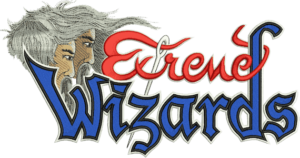Glossary
How can we help?
Also known as Puff, 3D embroidery uses foam under the stitches to create a raised effect. This technique differs from regular digitizing and involves several factors, including machine settings, type of foam, number of stitches, and design type. You can find a more detailed explanation on our YouTube channel.
Appliqué, derived from the French word for “to apply,” involves sewing a piece of fabric onto another to add texture and reduce the number of stitches needed. This method is highly effective for large designs, often using a piece of material, usually twill, in place of fill stitches. This technique drastically reduces stitch count, provides an attractive finish, and saves on production time.
Backing is a material placed under the fabric being embroidered to stabilize and support it during stitching. There are two main types: cutaway and tearaway, each suitable for different fabric types and embroidery styles.
A bean stitch is a type of run stitch that consists of three stitches moving back and forth between two points. It is commonly used to outline designs, providing a thicker and cleaner finish than a single running stitch.
Birdnesting occurs when threads tangle under the embroidery material near the needle plate. This is often due to improper thread tension or incorrect threading.
A bobbin is a small spool used to link the stitch from underneath the fabric. The bobbin thread works with the upper thread to form stitches.
A stiff fabric used to give structure to embroidered items, particularly hats, to keep them shaped and upright.
Resembling a chain link, this stitch uses a continuous thread from the underside of the fabric, executed either manually or with a machine.
The column stitch, consisting of closely spaced satin stitches, is typically used to form borders around fill areas and for digitizing text.
Cutaway and tearaway are types of backings that provide support during embroidery. Cutaway backing is more permanent and offers better stability, ensuring a quality finish. Tearaway backing can be removed after stitching is complete but provides less stability during embroidery. Cutaway is almost always the better choice to ensure a quality finish.
Density refers to the concentration of stitches in an area.It can be adjusted to be light or heavy, depending on the material .
Embroidery formats are specific file types used by machines to read and stitch designs. Each machine requires the correct file extension. Formats fall into two categories: source formats, used for editing and specific to the design software, and machine formats, specific to a brand and containing stitch data and machine functions. Machine formats are not easily scaled or edited without extensive manual work.
Also known as Tatami stitch, fill stitch is used to cover large areas within an embroidery design. Made from a series of run stitches, fill stitches can vary in stitch length, angle, and density
A frame that holds the fabric tight while it is being embroidered, crucial for maintaining fabric stability.
A lock stitch is a securing stitch used at the end of design elements to prevent unraveling. It consists of a series of small stitches that lock the thread before trimming. This stitch is usually avoided in small letters to prevent knots from forming and distorting the font.
Looping occurs when the top thread is improperly tensioned, causing loops on the surface of the embroidery. This issue is generally caused by poor top tension, tension problems, or a skipped stitch.
An embroidered design consisting of one or more letters, typically the initials of a personal name.
Puckering is a common issue where the fabric gathers into small folds or wrinkles around dense stitching. It is caused by tension imbalances, incorrect stitch density, loose hooping or lack of backing.
Push and pull compensation is used in digitizing to ensure embroidery designs keep their intended shape despite fabric movement during stitching.
Push Compensation
Effect: Stitches push the fabric outward.
Technique: Shorten parts of the design to counteract this push.
Pull Compensation
Effect: Stitches pull the fabric inward.
Technique: Lengthen parts of the design to counteract this pull.
By applying these adjustments, digitizers ensure the embroidered design maintains its correct dimensions and shape.
A tack down stitch is a preliminary stitch used to outline and hold in place areas using the appliqué technique. These initial stitches secure the appliqué fabric, ensuring it remains stable during the subsequent embroidery process.
Trimming is the process of cutting threads after an embroidery element is completed. This ensures a clean and professional finish to the embroidered design.
A foundational layer of stitches that helps to stabilize the fabric and enhance the quality of the top stitches.
